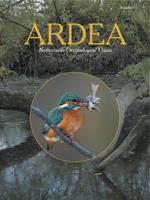In managed forests, birds that create their own breeding holes in trees have limited access to substrates in which they can excavate. Therefore, nest site use in these forests possibly reflects availability of substrates more than species preferences. We analysed data on nest sites of Great Spotted Woodpeckers Dendrocopos major collected during 1987–2013 in the strictly protected part of Białowieża National Park in East Poland. The woodpeckers excavated breeding holes in 11 tree species, but species used in individual habitats varied greatly: Alder Alnus glutinosa was almost the only species used in the riverine forest; Aspen Populus tremula, Hornbeam Carpinus betulus and Pedunculate Oak Quercus robur were used most often in oak-lime-hornbeam forest, whereas Scots Pine Pinus sylvestris and P. tremula were used most in coniferous habitat. In oak-lime-hornbeam habitat, the birds strongly preferred to excavate in P. tremula and Q. robur, in the coniferous habitat the birds preferred P. sylvestris and P. tremula, and in all habitats Norway Spruce Picea abies and Small-leaved Lime Tilia cordata were clearly avoided. The woodpeckers generally excavated in large trees (median diameter at breast height: 50 cm), high above the ground (median 11 m), mostly in the trunks (83%) of living trees (67%). Overall, 21.7% of entrance holes were facing downwards. This pattern of hole placement is similar to that reported from other mature forests in Europe. We stress that despite very high plasticity in this species, it seems to use a distinct set of criteria for nest site selection that is related to predation risk, microclimate and mechanical damage of the place of excavation.
How to translate text using browser tools
1 June 2017
Nest Sites of a Strong Excavator, the Great Spotted Woodpecker Dendrocopos major, in a Primeval Forest
Grzegorz Hebda,
Tomasz Wesołowski,
Patryk Rowiński
ACCESS THE FULL ARTICLE

Ardea
Vol. 105 • No. 1
June 2017
Vol. 105 • No. 1
June 2017
habitat occupancy
nest site choice
nest site use
primeval forest
tree holes
wood decay




